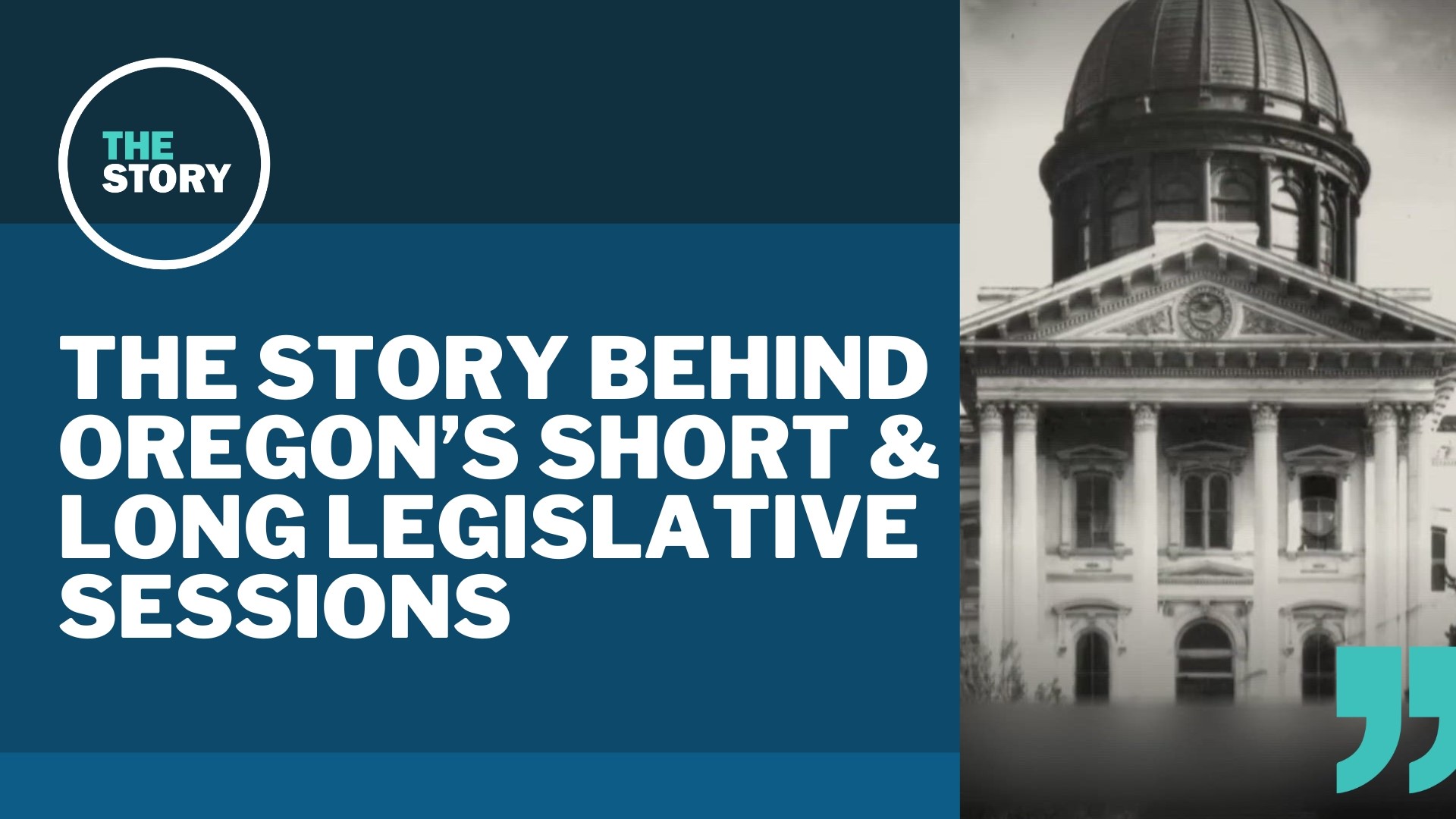SALEM, Ore. — Monday marked the beginning of the Oregon legislative session in Salem, and lawmakers have already staked out some major issues that they hope to address through bills, including changes to Measure 110 and boosts to housing development — but this year, they'll have little more than month to get it all done.
The session this year is just 35 days, compared to last year's 160-day session — interrupted though it was by a six-week Republican walkout. In Oregon, these short and long sessions alternate yearly, so 2025 will bring another long session. The reason why that structure exists dates back to the mid-1800s, when Oregon first became a state.
Oregon's provisional government first formally established a legislative branch in 1845. It consisted of a single chamber and little more than a dozen legislators. At the time, there wasn't a set schedule for sessions.
When Oregon became recognized as a state in 1859, the legislature expanded to the familiar two-chamber structure that we recognize today. Its first meeting was in the fall of 1860 for a brief session of 20-30 days, according to Kerry Tymchuk, executive director of the Oregon Historical Society. Lawmakers decided there that they would meet every two years, and only for a month or two.
Oregon has a "citizen's legislature," which means lawmakers aren't supposed to be professional politicians. They're expected to have jobs outside of the session, although they're necessarily the type of jobs that allow for someone to knock off for a month or five, and their salaries reflect that ostensibly part-time status. That's become a more controversial issue in recent years as the nature of work as a whole and the workload of legislating has changed.
Historically, lawmakers were largely farmers who would set aside their plowshares to take up the reins of government for a few weeks. And it took some of them quite a while to even travel out to Salem if they lived out in Pendleton, Medford or Brookings, for example.
With the small population of the state back then, there wasn't as much legislating to do, so the short biennial sessions were enough. Lawmakers kept meeting in the fall of odd-numbered years until 1885, Tymchuk said, when they moved the sessions to January — a sensible change, since fall is harvest time for farmers.
Those biennial sessions went on for over a century. By the late 2000s, Oregon was one of only five states to hold a legislative session every two years, and some lawmakers had been wondering for decades whether it made any sense to remain a part of that club. Voters roundly rejected earlier attempts to hold yearly sessions.
But in November 2010, voters overwhelmingly approved an amendment to the Oregon Constitution requiring that lawmakers meet every year. This ballot measure established the alternating long and short sessions: long sessions in odd years and short sessions in even years. The measure's text is what set the precise length for each type of session.
During odd-numbered years, the session starts on the Tuesday after Martin Luther King Jr. Day, and it starts during the first full week of February in even-numbered years.
Under the current system, five-day extensions to the session are allowed by a two-thirds vote in both chambers. The governor can also call a special session if there's an emergency for lawmakers to address. That happened most recently in 2020, when then-Governor Kate Brown called three special sessions to deal with the COVID-19 pandemic.
There is no limit to the length or number of special sessions that can be called in a year.

